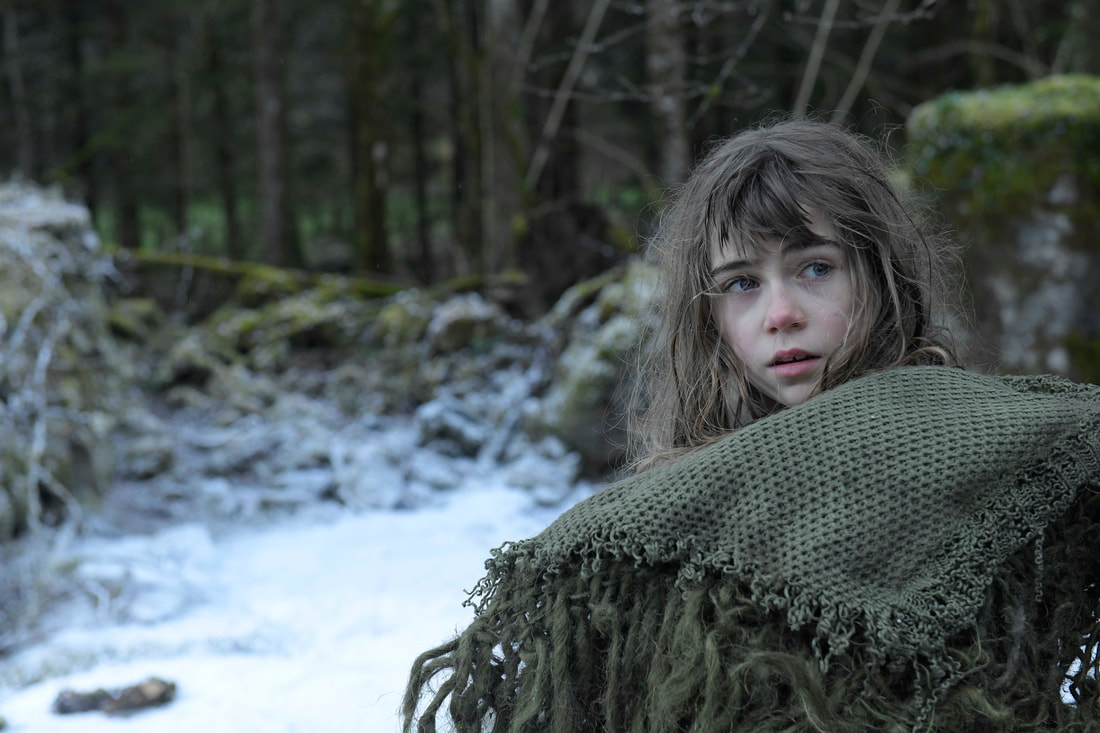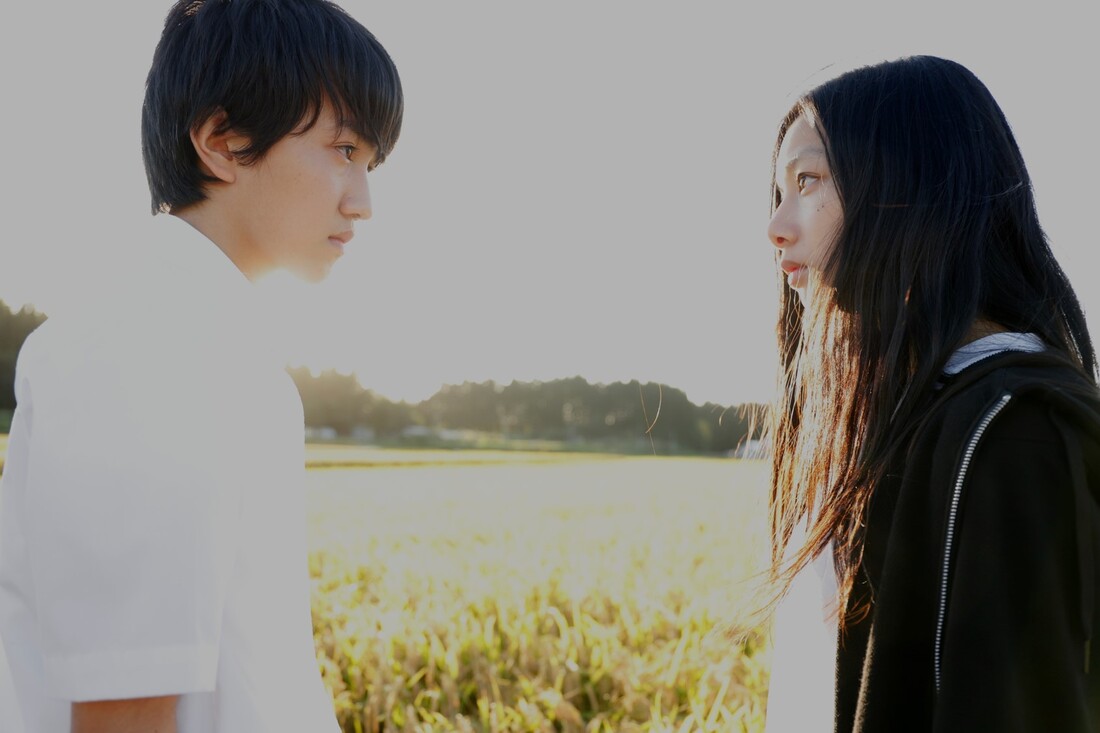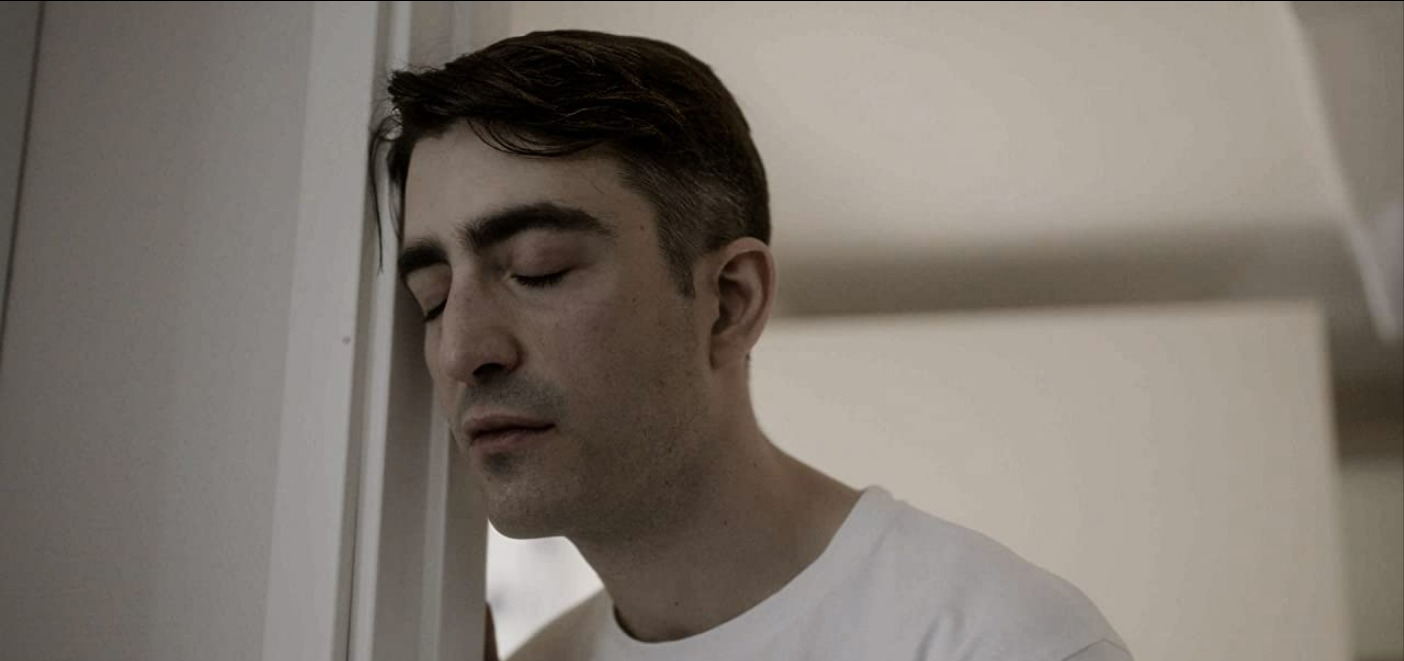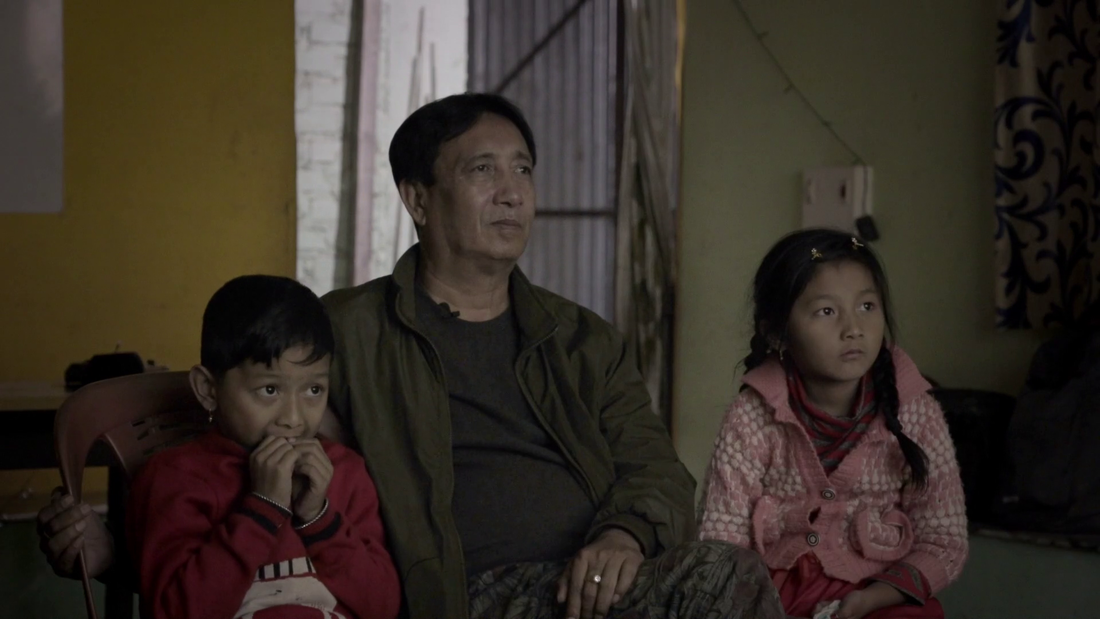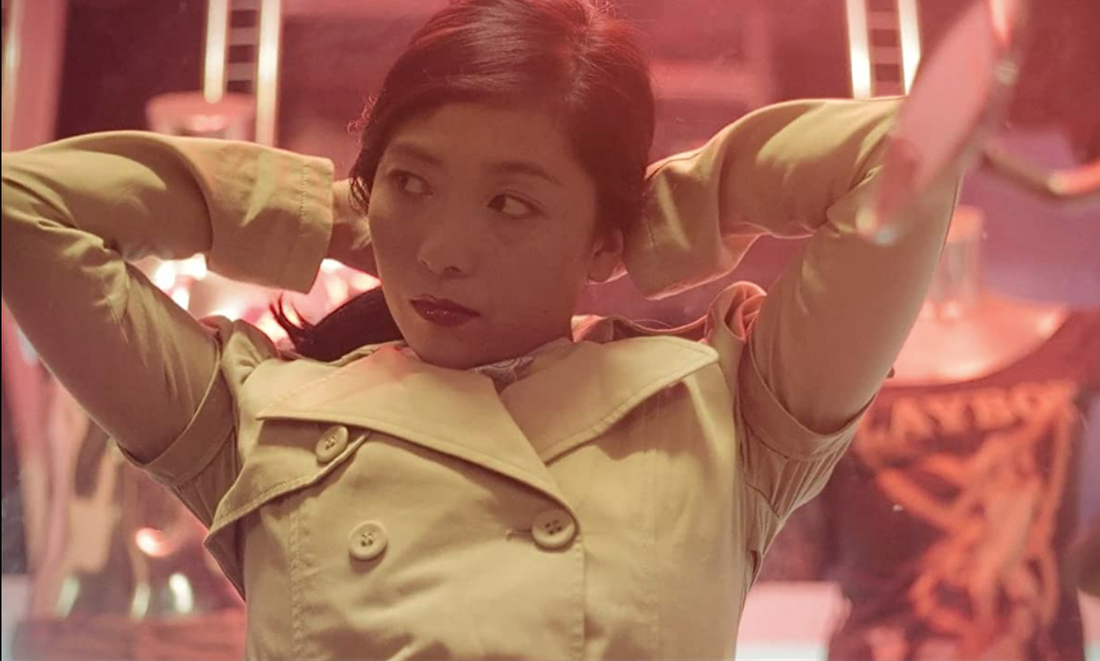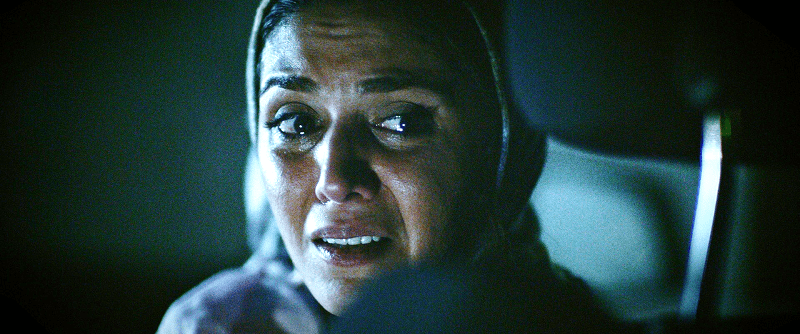|
Originally published on Elements of Madness. No country’s literature or filmography is short of romance stories. If a writer tells you they’re working on a piece about love, you’ll probably assume they’re talking about romantic love. We live in a culture that prioritizes romance and marriage, and it’s easy to forget that other types of love can be just as fulfilling. When Igor Legarreta and Jon Sagalá wrote a screenplay about a girl searching for love in her doomed existence as an immortal vampire, they decided not to turn their bloodsucker story into a romance. In All the Moons, which screened at the Fantasia International Film Festival in August, the young heroine discovers meaning in her wretched existence not from a romantic relationship, but from the love of a lonely man who becomes the parent she never had. Legarreta and Sagalá undertook a great challenge in choosing to write a vampire movie (at this point, what hasn’t already been done with vampires?), however, they made the most of this fantasy/horror sub-genre by exploring parent/child relationships and the question of consent in matters of life and death. The final product, directed by Legarreta, is an enchanting fantasy that wraps the joy, wonder, and melancholy of an entire lifetime into a single feature-length film.
0 Comments
Originally published on Elements of Madness. For most people, the teen years come with a myriad of confusing emotions, drastic life changes, and embarrassing incidents. For Akira and Maki, the young protagonists of Yoichi Narita’s Follow The Light, those formative years also bring a number of upsetting changes to their small farming community, including a UFO and crop circle. These bizarre occurrences not only set them on intersecting paths, but symbolically carry the weight of their strange and explosive teenage emotions. Follow the Light, an official selection at this year’s Fantasia International Film Festival, is a wistful romance that ponders the many conflicts and emotions of adolescence.
One of the most difficult parts of living alone is the silence. If it weren’t for FaceTime lunches with friends, work calls, and daily conversations with my cat, there might be days where I didn’t even hear the sound of my own voice. When my TV is off, my phone stops buzzing and there’s no sounds coming from outside, there’s this brief terrifying moment where I wonder if everyone else on Earth has disappeared. Even if I break the silence by talking to myself, it feels like I’m just sending my voice out into an empty void where no one will ever hear it. Writer/ director Jimmy Olsson captures this kind of loneliness in his short film, Notes, in which he offers a hopeful answer to the question that appears on the poster, “how can you speak when you have no one to talk to?” In Notes, a man moves into a temporary apartment after his bathroom floods, where he proceeds to work on a song he’s composing for his girlfriend’s birthday. He’s a little rusty on the keyboard and can’t quite find the right notes, but his neighbor chimes in through the wall to help him out.
I don’t think that anyone has ever convinced me to change my mind about my political or moral beliefs by using academic theories and 25-cent vocabulary words. However, when someone tells me a personal story, I can’t help but open my mind to new thoughts and ideas. As I participate in and observe political battles on social media, I’ve also learned that it’s easier to communicate with others via storytelling rather than through theoretical explanations filled with progressive buzz-words (which will just make people mad unless they already agree with you). Naturally, then, a narrative film can easily garner sympathy from a wide audience, while a politically-charged documentary will struggle to communicate with audience members who don’t already agree with its message. This is unfortunate, since many narrative films about social justice issues often go all-in with the drama, making the audience feel like they’ve done their part just by displaying an emotional response (as in, “I thought The Help was sad so clearly I’m not racist.”) So, what are some effective strategies that filmmakers can use to educate their audience about social justice issues? Samarth Mahajan gives us some ideas with his human-centered documentary, Borderlands.
Ran Slavin’s feature debut, “Call for Dreams,” is “A Page of Madness” for the 21st century.5/16/2021 Originally published on Elements of Madness. According to the press notes for Call for Dreams, Israeli director Ran Slavin started the project in pursuit of a “new cinematic form.” Slavin began with the idea to collect dreams from strangers that he could use as inspiration for his film and he ended up incorporating this idea into the plot of the film itself. Call for Dreams revolves around a young woman named Eko (Mami Shimazaki) who posts a “Call for Dreams” advertisement in a Tokyo newspaper. Strangers can describe their dreams to Eko by leaving a message on her answering machine, and if she approves of the dream, she’ll visit the customer and act out their dream for a fee. Meanwhile, an investigator in Tel Aviv (Yehezkel Lazarov) listens to old tapes on Eko’s machine as he investigates a murder. The two stories overlap in abstract ways that blur the lines between dreams, memories, and reality. Although the film flew under the radar for its international streaming release in late 2020, Call for Dreams is an intriguing film that deserves praise and critical attention.
It’s strange to think that children born within the last eight years or so will develop their first memories in a world where social distancing and mask wearing are the norm. While most of us have made significant lifestyle adjustments during the pandemic, this group of children has never known anything different. We certainly hope things will have gone back to “normal” by the time this generation comes of age, but there’s no doubt that COVID-19 will have many lasting effects on the world. In the short film “6,480 Days,” writer/director Ran Slavin imagines a future in which the lockdown never ended, and the virus is still a very real threat. The narrator, a young man born sometime after the initial outbreak, reflects on the pre-pandemic world he never knew. But like any good post-apocalyptic vision, “6,480 Days” has a lot more to say about our current fears and attitudes than those of future generations.
Originally published on Elements of Madness Kourosh Ahari’s psychological thriller, The Night, is a stellar example of a film that may not have the next best original ideas within its genre, but is so well done that it is nonetheless entertaining and worthwhile. Despite a handful of predictable plot points and stereotypical gendered conflicts, The Night’s talented cast and distinct style create a spine-chilling, mind-bending, what-did-I-just-watch experience that reminds us why the horror genre is so exciting.
★★★☆☆ Excessive and explicit violence on screen always leads to questions about whether such images are necessary. If a director packs their movie with medieval torture and bodily trauma, does that violence serve a purpose, or is it simply a sadistic celebration of gore that delights in human pain? Is the audience expected to enjoy the blood and torture, or are they likely to have a more complex viewing experience? After watching the trailer for Sleepless Beauty, a torture horror film from director Pavel Khvaleev, I’ll admit that I had low expectations for the film as far as it’s use of violence, and I prepared myself for excessive gore with little meaning or thought behind it. However, I found myself pleasantly surprised by Sleepless Beauty, which, although by no means groundbreaking or flawless, makes a definite attempt to substantiate its numerous torture scenes with a bit of social commentary. While it does not succeed in every instance, Sleepless Beauty aims to create a sympathetic victim, explore her mental state, and ask relevant questions that go beyond the blood and guts on screen.
Originally published on Elements of Madness 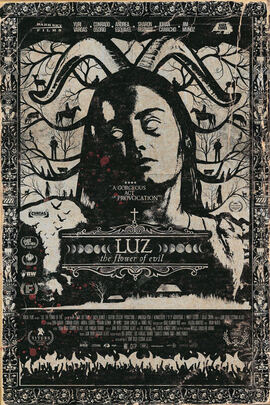 Last year, Ari Aster set the bar high for “daylight” horror films with Midsommar, a terrifying fantasy that casts its disturbing events against a beautiful, blossoming, sunlit backdrop. The genre-play proved to be quite successful for Aster, although the effect is not so much scary as it is genuinely disturbing. Fans of Midsommar will find a somewhat similar effect in Luz: The Flower of Evil, a folk-horror fantasy from writer/director Juan Diego Escobar Alzate. Combining the narrative elements of religious-cult horror films such as The Other Lamb (2019) with the vibrancy of Midsommar, Luz: The Flower of Evil is a stunning and layered exploration of faith, evil, and the search for meaning. Originally published on Elements of Madness 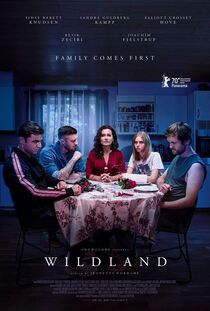 Although the Fantasia International Film Festival was held virtually this year, it still featured an incredible lineup of wild and visceral films that celebrated everything gory and horrific. Many of the featured titles were loud and boastful with their colorful characters and wacky situations, offering a whirlwind of both dreamy and nightmarish images. On the other hand, some of the films were softer with their style, offering up slow-burning, tense narratives and minimalist imagery that hit with just as strong of an impact. Among this second category of films is the feature debut of director Jeanette Nordahl, Wildland. A tense hybrid of family drama and crime thriller, Wildland is captivating from start to finish, despite its more subdued style. |
"Our embodied spectator, possibly perverse in her fantasies and diverse in her experience, possesses agency...finally, she must now be held accountable for it." Categories
All
|

